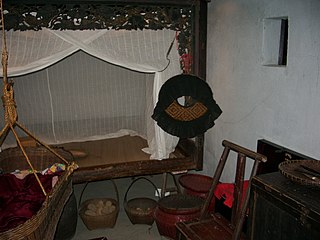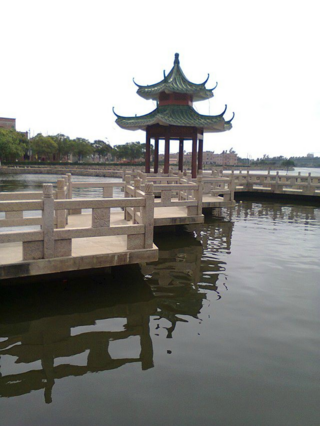
Guangdong, alternatively romanized as Canton or Kwangtung, is a coastal province in South China on the north shore of the South China Sea. The capital of the province is Guangzhou. With a population of 126.01 million across a total area of about 179,800 km2 (69,400 sq mi), Guangdong is the most populous province of China and the 15th-largest by area as well as the second-most populous country subdivision in the world. Its economy is larger than that of any other province in the nation and the fifth largest sub-national economy in the world with a GDP (nominal) of 1.95 trillion USD in 2021. The Pearl River Delta Economic Zone, a Chinese megalopolis, is a core for high technology, manufacturing and foreign trade. Located in this zone are two of the four top Chinese cities and the top two Chinese prefecture-level cities by GDP; Guangzhou, the capital of the province, and Shenzhen, the first special economic zone in the country. These two are among the most populous and important cities in China, and have now become two of the world's most populous megacities and leading financial centres in the Asia-Pacific region.

Yue is a group of similar Sinitic languages spoken in Southern China, particularly in Liangguang.
Japanese folktales are an important cultural aspect of Japan. In commonplace usage, they signify a certain set of well-known classic tales, with a vague distinction of whether they fit the rigorous definition of "folktale" or not among various types of folklore. The admixed impostors are literate written pieces, dating back to the Muromachi period or even earlier times in the Middle Ages. These would not normally qualify for the English description "folktales".

The culture of Hong Kong is primarily a mix of Chinese and Western influences, stemming from Lingnan Cantonese roots and later fusing with British culture due to British colonialism. As an international financial center dubbed "Asia’s World City", contemporary Hong Kong has also absorbed many international influences from around the world. Moreover, Hong Kong also has indigenous people and ethnic minorities from South and Southeast Asia, whose cultures all play integral parts in modern day Hong Kong culture. As a result, after the 1997 transfer of sovereignty to the People's Republic of China, Hong Kong has continued to develop a unique identity under the rubric of One Country, Two Systems.

Cantonese opera is one of the major categories in Chinese opera, originating in southern China's Guangdong Province. It is popular in Guangdong, Guangxi, Hong Kong, Macau and among Chinese communities in Southeast Asia. Like all versions of Chinese opera, it is a traditional Chinese art form, involving music, singing, martial arts, acrobatics, and acting.

The Baiyue, Hundred Yue, or simply Yue, were various ethnic groups who inhabited the regions of Southern China and Northern Vietnam during the 1st millennium BC and 1st millennium AD. They were known for their short hair, body tattoos, fine swords, and naval prowess.
The subgroups of the Han Chinese people are defined based on linguistic, cultural, ethnic, genetic and regional features. The terminology used in Mandarin to describe the groups is: "minxi", used in Mainland China or "zuqun", used in Taiwan. No Han subgroup is recognized as one of People's Republic of China's 56 official ethnic groups.
Lingnan culture, or Cantonese culture, refers to the regional Chinese culture of the region of Lingnan: twin provinces of Guangdong and Guangxi, the names of which mean "eastern expanse" and "western expanse" respectively.

Punti is a Cantonese endonym referring to the native Cantonese people of Guangdong and Guangxi. Punti designates Weitou dialect-speaking locals in contrast to other Yue Chinese speakers and others such as Taishanese people, Hoklo people, Hakka people, and ethnic minorities such as the Zhuang people of Guangxi and the boat-dwelling Tanka people, who are both descendants of the Baiyue – although the Tanka have largely assimilated into Han Chinese culture.

The Cantonese people or Yue people, are a Yue-speaking Han Chinese subgroup originating from or residing in the provinces of Guangdong and Guangxi, in Southern Mainland China. Although more accurately, "Cantonese" refers only to Han Chinese with roots from Guangzhou and its satellite cities and towns, rather than simply and generally referring to the people of the Liangguang region.

Lingnan is a geographic area referring to the lands in the south of the Nanling Mountains. The region covers the modern Chinese subdivisions of Guangdong, Guangxi, Hainan, Hong Kong, and Macau, as well as modern northern to central Vietnam.

Wuchuan is a county-level city in the southwest of Guangdong province, China. It is the easternmost county-level division of the prefecture-level city of Zhanjiang. The total area of Wuchuan is 848 square kilometers (327 sq mi), with an estimated population of 1,111,394 in 2013.

As trade was an important source of wealth for the Baiyue peoples of coastal southern China, the region south of the Yangtze River attracted the attention of Emperor Qin Shi Huang, and he undertook a series of military campaigns to conquer it. Lured by its temperate climate, fertile fields, maritime trade routes, relative security from warring factions to the west and northwest, and access to luxury tropical products from Southeast Asia, the emperor sent armies to conquer the Yue kingdoms in 221 BC. Military expeditions against the region were dispatched between 221 and 214 BC. It would take five successive military excursions before the Qin finally defeated the Yue in 214 BC.
Lady Xian, also known as Lady of Qiao Guo, born as Xian Zhen (冼珍), was a noblewoman of the Li people, born to the chieftain of the Xian tribe in Southern China, in what is now Guangdong during the Sui dynasty. She has been deified as the "Saintly Mother of Lingnan" (岭南圣母). She died during a tour of Hainan. Former Chinese Premier Zhou Enlai called her "the First Heroine of China", and Chinese Communist Party general secretary Jiang Zemin praised her as "the role model that the later generations should learn forever". Lady Xian is depicted in the Wu Shuang Pu by Jin Guliang.

Lingnan architecture, or Cantonese architecture, refers to the characteristic architectural style(s) of the Lingnan region – the Southern Chinese provinces of Guangdong and Guangxi. Usually, it is referring to the architecture associated with the Cantonese people, with other peoples in the area having their own styles. This style began with the architecture of the ancient non-Han Nanyue people and absorbed certain architectural elements from the Tang Empire and Song Empire as the region sinicized in the later half of the first millennium AD.

The Lingnan School of painting, also called the Cantonese School, is a style of painting from the Guangdong or Lingnan region of China.
Lingnan garden, also called Cantonese garden, is a style of garden design native to Lingnan – the traditionally Cantonese provinces of Gwongdung and Gwongsai in southern China. It, alongside the likes of Sichuanese garden and Jiangnan garden, is one of the major styles of Chinese garden.
Cantonese poetry is poetry performed and composed primarily by Cantonese people. Most of this body of poetry has used classical Chinese grammars, but composed with Cantonese phonology in mind and thus needs to be chanted using the Cantonese language in order to rhyme.
Bone collecting is a burial ritual practiced in certain parts of East Asia. Peoples known to adopt some forms of this custom include Cantonese, Hoklo, Taiwanese, Ryukyuan, and Zhuang. Most of these groups are related to Baiyue, and indeed ancient Han Chinese had literature that documented such customs being practiced by various Baiyue tribes.
Lingnan Confucianism refers to the Confucian schools of thoughts in Lingnan - the Southern Chinese provinces of Guangdong and Guangxi. These schools are primarily formed by Cantonese people, who have traditionally been the dominant demographic in the region.












